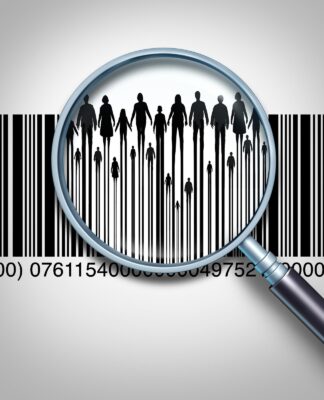We may not live on Mars or travel by air, but there is no doubt that the next decade will bring many innovative and energizing breakthroughs. In this article. I have to come back to the 25 major innovation trends that I adopt and which will shape the 2020s.
Artificial intelligence (AI) and machine learning
The increasing ability of machines to learn and act with enthusiasm will completely change our reality. Plus, it’s the main driving force behind several different models in this overview ai powered analytics.
The Internet of Things (IoT)
This alludes to the growing number of “enthusiastic” gadgets and articles associated with the web. These devices continuously assemble and transmit information, stimulating the development of Big Data and AI.
Wearables and augmented humans
What started with wellness trackers has now exploded into a wearable innovation industry aimed at improving human performance and helping us live more beneficial, safer and more productive lives. Later, we can even observe that people converge with innovation to become “extended people” or “transhumans”.
Big Data and augmented analysis.
Enormous Data refers to the exponential development of the measurement of information produced in our reality. Thanks to an expanded survey (exceptionally powered information review, often powered by AI methods). We would now be able to understand and work with huge and complex waves of information.
Smart spaces and smart places.
Solidly connected to IoT, this model sees physical spaces – such as homes, workplaces and even entire urban areas – gradually becoming associated and brilliant.
Blockchains and distributed registers.
This ultra-secure strategy for storing, confirming and securing information could upset many sectors of activity – particularly in terms of encouraging confidentiality of exchanges.
Cloud and edge computing
Distributed computing – where information is stored on different PCs and accessed via the web – has helped open up information and surveys to the majority. Edge recording – where information is prepared on smart gadgets (like phones) – will take this level to the next level.
Digitally extended realities.
Enveloping computer generated simulation, expanded reality and mixed reality, this model presents the tendency to make computerized meetings more and more lively.
Digital cufflinks.
An advanced twin is a computerized duplicate of a genuine article, article, procedure, or physical environment. This inventive innovation allows us to evaluate modifications and changes that would be excessively expensive or unsafe to give the genuine physical item a chance.
Natural language processing.
This innovation, which enables machines to understand human language, has significantly changed the way people collaborate with machines, specifically offering to ascend to …
Voice interfaces and chatbots.
Alexa, Siri, chatbots – A significant number of us are currently very used to talking to machines or writing our request. Later, an increasing number of organizations will decide to communicate with their clients through voice interfaces and chatbots.
Computer vision and facial recognition.
Machines can talk, is there a good reason why they shouldn’t “see” too? This innovation allows machines to externally decipher their general environment, with facial recognition being an excellent model. Although there will be no uncertainty, we will see a more notable administrative authority in the use of facial recognition, this innovation is going nowhere.
Robots and cobots.
Today’s robots are smarter than at any time in recent memory, figuring out how to react to their condition and run errands without human intercession. In some companies, the final destination of the work will probably include people who work permanently with associated robots, hereinafter called “cobot” or “shared robot”.
Autonomous vehicles.
The 2020s will be the decade when autonomous vehicles of different types (vehicles, cabins, trucks and even ships) will become truly independent and practical from an industrial point of view.
5G.
The fifth era of innovation in cellular arrays will allow us to manage systems faster, brighter and progressively more stable, leading to advances in many different models (for example, more and more associated devices and more information flow). scandalous).
Genomics and gene editing.
Advances in registration and research have resulted in impressive advances in our understanding of the human genome. We are currently making progress in modifying the inherited structure of life forms (for example, “checking” for DNA transformations that can lead to malignant growth).
Machine co-creativity and better design.
Thanks to AI, machines can do a lot of things, including creating illustrations and structures. Subsequently, we can expect ingenious configuration procedures to evolve into a more remarkable coordinated effort with the machines.
Digital platforms.
Facebook, Uber, and Airbnb are examples of easily recognizable names for computerized steps, systems that foster partnerships and exchanges between individuals. This model transforms the action plans built over their heads, pushing many organizations to advance or consolidate a tiered model.
Drones and unmanned aerial vehicles.
These planes, which are remotely or independently guided, have changed the substance of military activities. Either way, the effect doesn’t end there: search and rescue, firefighting, law enforcement, and transportation will all be traded for radical innovation. Also prepare sightseeing (taxi rides)!
Cybersecurity and resilience.
As organizations face new unique dangers, the ability to dodge and mitigate the dangers of cybersecurity will be essential to the progress of the next decade.
Quantum computing.
Incredibly fast PCs capable of handling seemingly difficult to solve problems. Quantum PCs will bring our best innovation today as if it came out of the Stone Age. Until now, work on quantum recording was largely limited to laboratories. But you could see the main quantum PC available on an industrial scale during this decade.
Robotic process automation.
This innovation is used to mechanize boring and organized forms of business.. Opening up human workers to focus on a growing hallucination, he estimates, that includes work. This is one piece of a broader move toward computerization that will affect all industries. By this UiPath Training you can gain a good amount of knowledge in RPA technology.
Massive customization and micro-moments.
Bulk customization is, unsurprisingly, the ability to deliver exceptionally personalized items or administrations on a large scale. Meanwhile, the term “small-scale minutes” basically means reacting to customer needs at the specific second moment. Both are conceivable for breakthroughs like AI, Big Data, and research.
3D and 4D printing and additive manufacturing.
Despite the fact that this may seem low-tech in contrast to a part of different patterns, 3D and 4D printing will have extremely wide applications, and will be especially transformative when combined with patterns like mass customization.
Nanotechnology and materials science.
Our expansive ability to source materials and control matter for a shorter range offers an upgrade to energize new materials and items, for example flexible cabinets.















